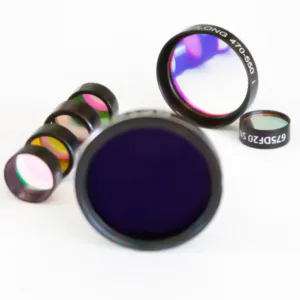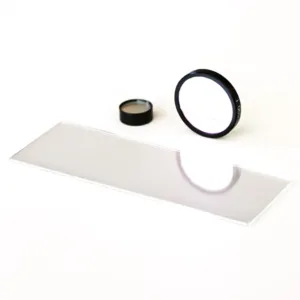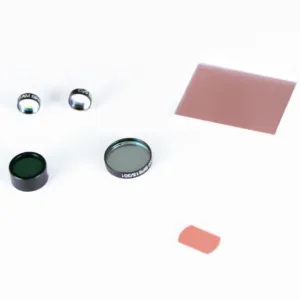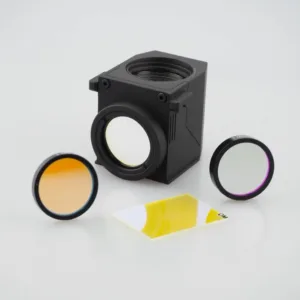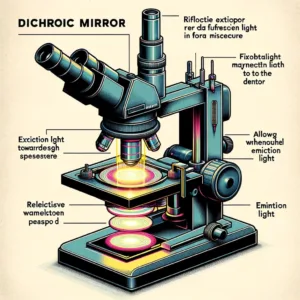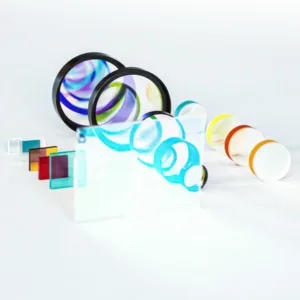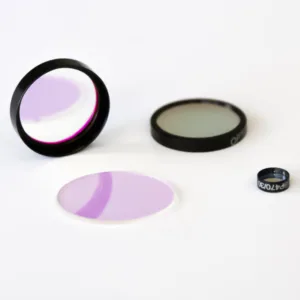-
The excellent 10 of Optical Filter Manufacturers
In the rapidly developing field of optical technology, high-quality optical filters can effectively improve image quality, and manage light wavelengths, and are widely used in various industries such as photography, astronomy, healthcare, and telecommunications. As the demand for the optical field continues to grow, it is becoming increasingly important to choose some high-quality manufacturers. This …
Read More -
Fluorescence Filters: What is it? and application
Fluorescence filters are a type of optical filter that is used to selectively transmit or reflect light within a specific wavelength range to enhance or suppress the fluorescence signal generated by the sample. Fluorescence filters have a wide range of applications in fields such as biomedicine, biochemistry, materials science, and environmental monitoring. Let’s take a …
Read More -
What is Flatness in Optics? Applications & Measurement Methods
In the field of optics, flatness determines the performance and efficacy of various optical components such as mirrors, lenses, and windows. This property defines the accuracy with which a surface is aligned with an ideal plane and is not only a measure of quality but a fundamental criterion that affects the entire optical system. This …
Read More -
UV Bandpass Filter: What Is It and What Are Its Types?
UV bandpass filters selectively transmit ultraviolet (UV) light while blocking other wavelengths of light. These filters enable precise control of UV radiation in a variety of applications. UV bandpass filters come in many types, each with its own unique materials and construction methods. Let’s read this article to explore the definition of UV bandpass filters …
Read More -
Texas Red Filter: Role and Application
Texas Red filters can effectively isolate specific wavelengths of light in fluorescence microscopes, allowing researchers to observe minute details in biological samples. Texas Red filters not only improve the clarity and contrast of images, but also greatly The earth promotes the in-depth development of biological research. In this article, we’ll take a closer look at …
Read More -
The Function of Dichroic Mirror in Fluorescence Microscopy
In fluorescence microscopy, dichroic mirrors are used to precisely separate light beams so that certain wavelengths of light are reflected and other wavelengths of light are transmitted. It not only enhances the imaging quality of fluorescence microscopy but also greatly expands its application scope. This article will explore the role of dichroic mirrors in fluorescence …
Read More -
What Are the Different Types of Optics?
“Optics” is an important branch of physics that covers the properties, behavior, and interaction of light with matter. It is used in many fields, including research using telescopes and microscopes, laser technology, and medical imaging. This article will focus on Introducing the various types and applications of optics, let’s read it together! What is optics? …
Read More -
What is a Beam Splitter: Types And Applications
Beam splitters come in many different forms, including cube and plate configurations, each with its own unique characteristics and applications. Beamsplitters are good at splitting incoming light in specified ratios, and they are required to precisely control light intensity in experiments and measurements. In this article, we will take an in-depth look at the types, …
Read More -
How does a band pass filter work in optics
Bandpass filters help isolate spectral features, reduce noise, and focus on specific aspects of the spectrum. This introduction will explore the basic working principles, practical applications, and some common problems of bandpass filters in the field of optics. What is a Band Pass Filter? In optics, a bandpass filter selectively passes light within a specific …
Read More -
Long Pass and Short Pass Filter: What are the Differences?
Long-pass and short-pass filters affect the quality and characteristics of images by controlling the wavelength of light. Let’s explore their differences, applications, and the mechanisms by which they affect light transmission. What Is a Long Pass Filter? Longpass filters transmit light with wavelengths longer than a specific cutoff wavelength while blocking light with shorter wavelengths. …
Read More

